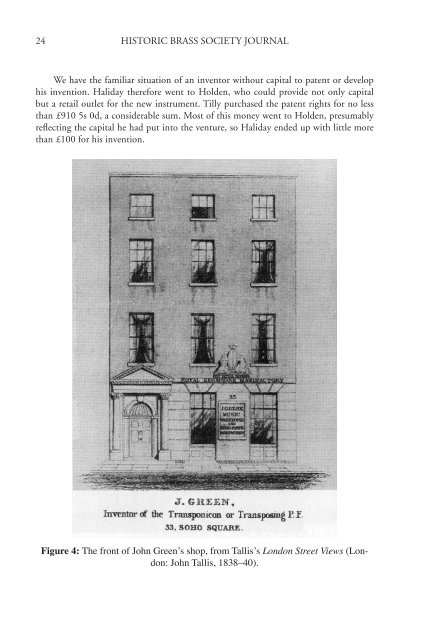New Light on the Early History of the Keyed Bugle Part I: The Astor ...
New Light on the Early History of the Keyed Bugle Part I: The Astor ...
New Light on the Early History of the Keyed Bugle Part I: The Astor ...
Create successful ePaper yourself
Turn your PDF publications into a flip-book with our unique Google optimized e-Paper software.
24<br />
HISTORIC BRASS SOCIETY JOURNAL<br />
We have <strong>the</strong> familiar situati<strong>on</strong> <strong>of</strong> an inventor without capital to patent or develop<br />
his inventi<strong>on</strong>. Haliday <strong>the</strong>refore went to Holden, who could provide not <strong>on</strong>ly capital<br />
but a retail outlet for <strong>the</strong> new instrument. Tilly purchased <strong>the</strong> patent rights for no less<br />
than £910 5s 0d, a c<strong>on</strong>siderable sum. Most <strong>of</strong> this m<strong>on</strong>ey went to Holden, presumably<br />
reflecting <strong>the</strong> capital he had put into <strong>the</strong> venture, so Haliday ended up with little more<br />
than £100 for his inventi<strong>on</strong>.<br />
Figure 4: <strong>The</strong> fr<strong>on</strong>t <strong>of</strong> John Green’s shop, from Tallis’s L<strong>on</strong>d<strong>on</strong> Street Views (L<strong>on</strong>d<strong>on</strong>:<br />
John Tallis, 1838–40).

















